Lag screw with or without neutralization plate
1. Introduction
Nonoperative treatment of periprosthetic fractures of the proximal tibia often leads to nonunion or malunion. However, operative stabilization can be challenging because of the limited available bone stock for fixation.

2. Implant selection
Plate selection
Fracture fixation is largely dependent on the anatomy of the fracture and the selected approach. The proximal tibia requires the use of low-profile plating constructs due to poor soft tissue coverage. Medial, lateral, and posteromedial options are possible.
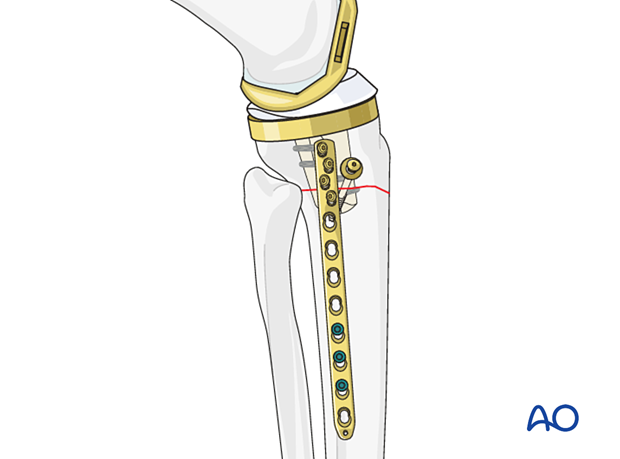
Variable angle locking options are advantageous in the proximal tibia when screw placement is limited by the prosthesis and the cement mantle.
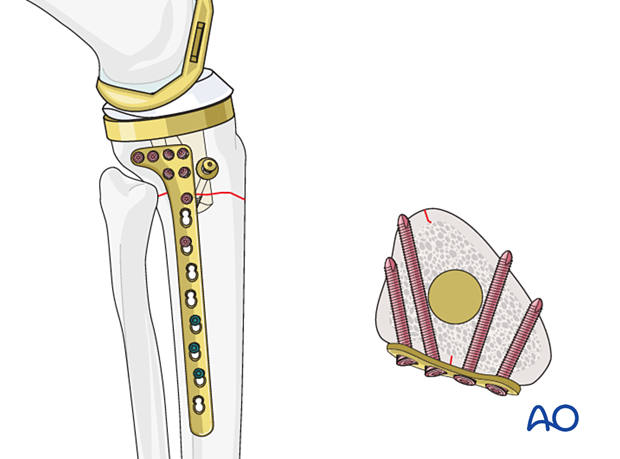
Some plates offer small fragment and large fragment options at opposite ends of the plate, which allows for a low-profile option on the proximal tibia (metaphyseal plate).

Options for additional stability
Additional stabilization can be achieved with locking and nonlocking screw fixation above and below the fracture site.
If there is no room for bicortical screw fixation, different options may be used around the component stem to secure the plate:
- Unicortical locking screw fixation
- Cerclage cables integrated into the plate
- Locking attachment plate
For additional details on these implants please refer to adjunct plate options.
3. Patient preparation and approach
In some cases, the midline approach to the knee that was used for the knee arthroplasty will be extended in order to adequately expose the fracture.
Small incisions may be made over the distal aspect of the plate utilizing fluoroscopy as a guide, in order to minimize larger surgical approaches.
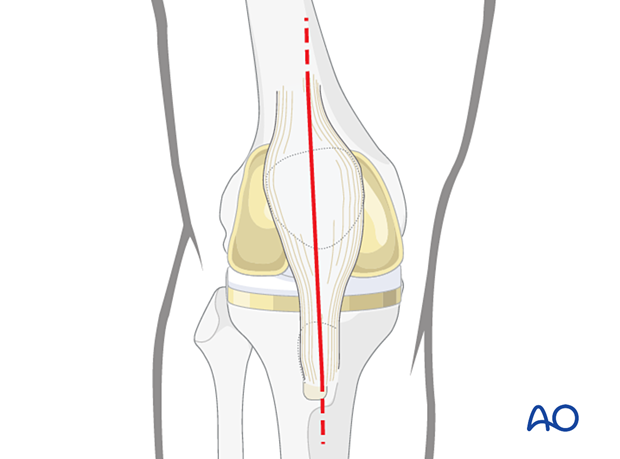
Supine positioning with a bump under the ipsilateral greater trochanter helps face the patella forward.
Flexion of the knee can aid in fracture reduction and careful evaluation of preoperative radiographs will predict the need for flexion. A radiolucent triangle or a ramp for the extremity can be utilized based on the surgeon's preference. The following patient preparations can be used:
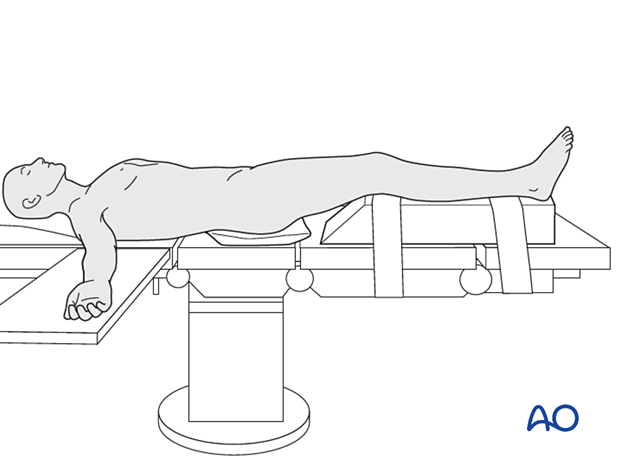
4. Reduction
Direct reduction
The fracture site should be exposed, cleared of hematoma and debris, and reduced utilizing appropriate direct reduction maneuvers.

Oblique fractures
Direct reduction is complicated by the interference of the prosthesis with direct reduction techniques applied from one side of the bone.
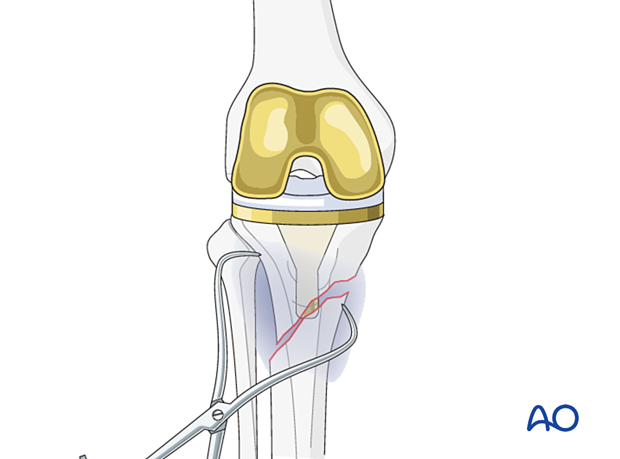
5. Fixation
Lag screw fixation
A bicortical lag screw is inserted according to the standard technique. In osteoporotic bone, smaller caliber lag screws and/or washers should be utilized to minimize the risk of fracture propagation and comminution.
Lag screws should not be inserted through the cement mantle as reliable compression cannot be achieved.
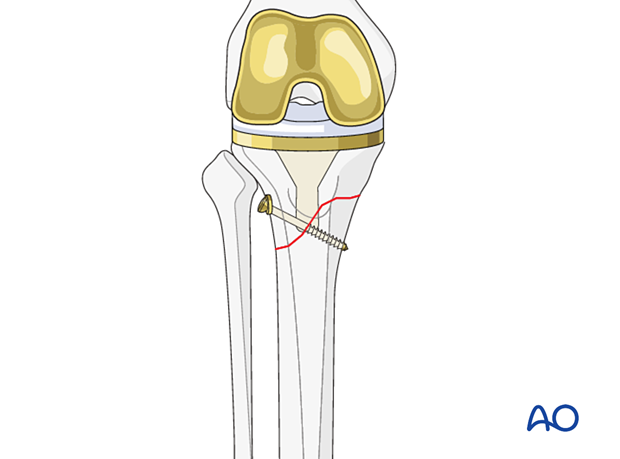
Plate contouring
The surgeon should ensure that the plate selected is perfectly contoured to the bone as not to disrupt the compression that is achieved by the lag screw. Small fragment plates are easier to contour.

Plate fixation
The plate is fixed to the bone using a mixture of cortical, locking, and non-locking screw fixation. In this way, fixation of a short proximal segment can be achieved along with avoidance of displacement of the now compressed fracture.

6. Radiographic verification
Anteroposterior, mediolateral, and oblique radiographs of both the fracture site and the arthroplasty are obtained at the end of the procedure, to ensure that:
- There is no displacement
- The joint articulation is preserved
7. Aftercare
These fixation techniques will often allow early full weight-bearing postoperatively. Because of limited bone stock sometimes protective weight bearing will be needed until fracture consolidation is visible.
Knee bracing is not essential and should be considered optional for patient comfort.













